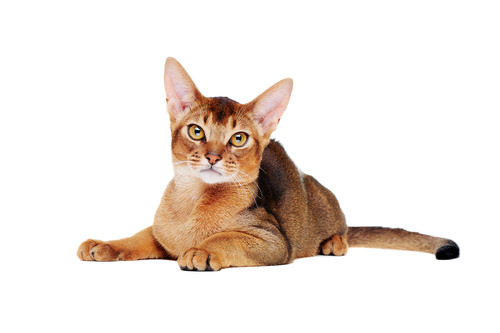
Mankind has a way of taking something great and trying to make it greater. Our belief, as a species, that we can improve on nature has gotten us into lots of trouble over the years.
One of the ways that we cause trouble is by selectively breeding cats for specific traits. We have inadvertently selected for many types of diseases when we tried to decide how our cats should look and act. When we choose to breed selected cats to other cats exhibiting specific traits, we will always get other things that we may not want.
There are more than 70 genetic mutations documented in cats around the world1. Randomly bred domestic cats can also experience genetic mutations, but these are much less common than mutations found in purebred cats. Since scientists have been able to sequence the feline genome much light has been shed on genetic disease in this species.
For example, an unusual disease has been discovered in related British Shorthair kittens. It seems to be similar to a human disorder called autoimmune lymphoproliferative syndrome which is known to be inherited. The malady has cellular characteristics of auto-immunity and T cell lymphoma. The difficult to manage and lifelong ailment is something that we should attempt to eliminate from the feline gene pool, but the exact gene mutation responsible has not been identified and there is no pre-breeding screen. 2
There is a genetic link to retinal degeneration in Bengal cats. These gorgeous and affable cats are well loved and popular. It is a pity that these characteristics have been accompanied by some less desirable ones. Cats affected by progressive retinal degeneration rapidly become irreversibly blind. Other types of genetic retinal degeneration (although not exactly the same gene) have been identified in Siamese, Abyssinian, and Persian cats. 3
There is a disorder called familial amyloidosis in Abyssinian cats which causes amyloid, a protein like substance to be deposited in the kidneys. Eventually the amyloidosis will cause irreparable damage to the kidney tissue and progress to terminal renal failure.4
It is important that if people are going to breed cats, we must be aware of the inadvertent selection for genetic disease. Many of these diseases cannot be screened for, so your safest genetic bet is adopting a mixed domestic cat from a rescue or shelter. Although not completely absent, genetic disorders are less of a risk in these cats because they are not a product of selective and line breeding.
Join the conversation! Find me and other cat lovers on Facebook by clicking here!
- J Feline Med Surg. 2015 May;17(5):405-15. doi: 10.1177/1098612X15581133. Investigation of inherited diseases in cats: genetic and genomic strategies over three decades. Gandolfi B, Alhaddad H.
- Vet Pathol. 2015 Nov;52(6):1176-82. doi: 10.1177/0300985815586224. Epub 2015 Jun 3.
A Novel and Likely Inherited Lymphoproliferative Disease in British Shorthair Kittens.
Aberdein D, Munday JS, Fairley RA, Vernau W, Thompson KG.
- Invest Ophthalmol Vis Sci. 2015 Aug;56(9):5299-308. doi: 10.1167/iovs.15-16585.
Characterization of an Early-Onset, Autosomal Recessive, Progressive Retinal Degeneration in Bengal Cats.
Ofri R, Reilly CM, Maggs DJ, Fitzgerald PG Shilo-Benjamini Y, Good KL, Grahn RA Splawski DD, Lyons LA.
- J Vet Intern Med. 2015 Mar-Apr;29(2):505-12. doi: 10.1111/jvim.12561. Epub 2015 Mar 16.
Changes in serum and urine SAA concentrations and qualitative and quantitative proteinuria in Abyssinian cats with familial amyloidosis: a five-year longitudinal study (2009-2014).Paltrinieri S1, Sironi G, Giori L, Faverzani S, Longeri M.
